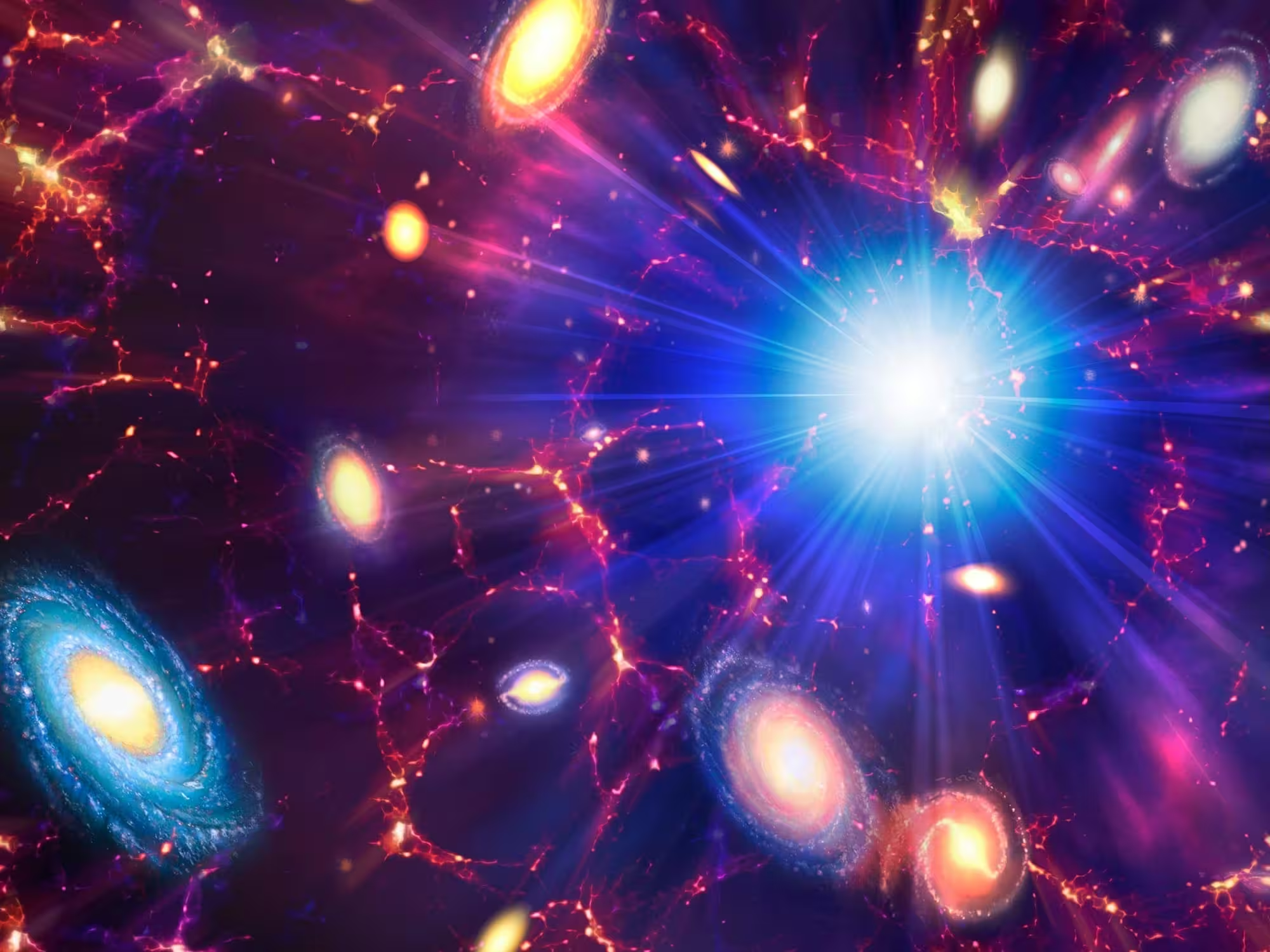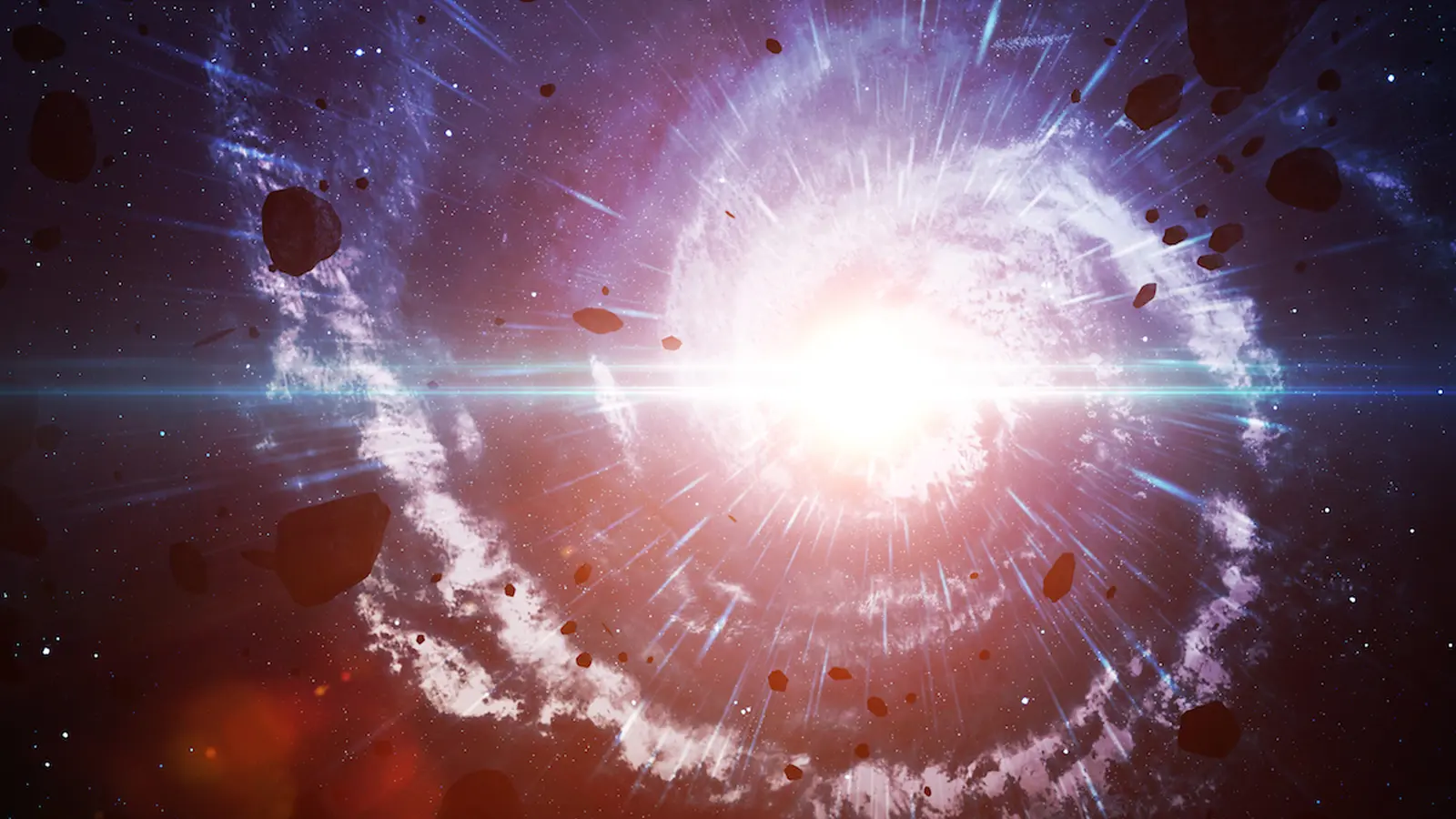8 Minutes
Probing the pre-Big Bang frontier with supercomputers
A new review by cosmologist Eugene Lim (King's College London) and astrophysicists Katy Clough (Queen Mary University of London) and Josu Aurrekoetxea (University of Oxford), published in Living Reviews in Relativity (June 2025), argues that large-scale computer simulations — specifically numerical relativity — can extend cosmology beyond its traditional analytical boundaries. The authors propose using numerical solutions to Einstein's field equations to explore regimes of extreme gravity and energy where pen-and-paper calculations break down. These simulations run on modern supercomputers and are designed to tackle key questions: Was there a universe before the Big Bang? Could our cosmos be one of many in a multiverse? Has our universe collided with another, leaving observable scars on the sky? Or might the cosmos undergo cycles of contraction and rebirth?
Einstein's equations remain the most successful description of gravity and spacetime, but they can lead to singularities — points where density and curvature become formally infinite and classical physics fails. Standard cosmological models avoid computational complexity by assuming the universe is homogeneous and isotropic (the same in every place and direction). That simplifying symmetry lets researchers reduce Einstein's equations to a tractable form. Yet those assumptions may not hold near the Big Bang or in other extreme scenarios, so relying on them risks missing key physics. Numerical relativity removes those symmetry constraints by solving the full, non-linear equations numerically, enabling researchers to probe anisotropic, inhomogeneous, and strongly curved spacetimes.
Numerical relativity: history and relevance to cosmology
Numerical relativity emerged in the 1960s and 1970s to model highly non-linear gravitational dynamics — notably black-hole mergers and gravitational-wave emission. The method matured alongside experimental efforts such as LIGO (the Laser Interferometer Gravitational-Wave Observatory). A crucial milestone came in 2005 when numerical-relativity groups produced robust simulations of black-hole collisions that matched observed gravitational-wave signals. Those successes demonstrated that complex, strongly relativistic phenomena can be predicted by combining Einstein's equations with large-scale computation.
Lim emphasizes this capability with a metaphor: "You can search around the lamppost, but you can't go far beyond the lamppost, where it's dark — you just can't solve those equations. Numerical relativity allows you to explore regions away from the lamppost." By removing simplifying symmetries, numerical relativity can simulate radically different initial conditions for the early universe and test whether inflation, bouncing cosmologies, or other mechanisms naturally emerge.
Why inflation remains puzzling
Cosmic inflation — a hypothesized epoch of exponential expansion in the first tiny fraction of a second — explains why the observable universe appears flat, homogeneous, and isotropic on large scales. But inflation itself raises questions: what caused the inflationary phase, and how did the pre-inflationary state arise? Traditional analytic approaches typically assume the very uniform preconditions that inflation is invoked to justify. Numerical relativity allows cosmologists to start from far less symmetric initial states and ask whether inflation can still occur robustly, or whether competing phenomena dominate.

Applications: gravitational waves, cosmic strings, collisions, and bouncing universes
Numerical relativity has several promising applications in theoretical and observational cosmology. One is predicting gravitational-wave signatures from exotic early-universe processes. Hypothetical topological defects called cosmic strings — long, thin concentrations of energy that could form after symmetry-breaking phase transitions — would produce distinctive gravitational-wave patterns. Numerical simulations can compute those waveforms and inform searches by ground- and space-based detectors.
Another application targets multiverse and collision scenarios. If our observable patch of space resulted from a bubble nucleation event or collided with an adjacent bubble universe, the sky could bear subtle, localized imprints — temperature or polarization "bruises" in the cosmic microwave background (CMB) or anisotropic distributions of large-scale structure. Numerical relativity can model how such collisions would distort spacetime and generate observable signatures, providing concrete templates for data analysis.
Perhaps the most provocative prospect is simulating so-called bouncing or cyclic cosmologies. In these models the universe avoids a singular beginning by transitioning from contraction to expansion through a high-curvature bounce. Analytical methods struggle with the non-linearities at the bounce; numerical relativity can follow the full evolution through strong-gravity regimes to assess whether bounces are physically plausible and whether they leave testable relics.
"Bouncing universes are an excellent example, because they reach strong gravity where you can't rely on your symmetries," Lim notes. "Several groups are already working on them — it used to be that nobody was." The combination of better algorithms, increased computational power, and improved numerical-relativity toolkits is opening a new window on these problems.
Computational challenges and infrastructure
High-fidelity numerical-relativity simulations are computationally expensive. They require stable numerical formulations of Einstein's equations, adaptive mesh refinement to resolve tiny scales, and large-scale parallelization on supercomputers. Advances in GPU acceleration, exascale computing initiatives, and community software frameworks (for example, the Einstein Toolkit and other open-source codes) are making these projects increasingly feasible. The new review by Lim and collaborators aims to bridge expertise between cosmologists and numerical-relativists so researchers can leverage contemporary high-performance computing for cosmology-grade simulations.
Expert Insight
Dr. Maya Santos, an observational cosmologist at the Institute for Computational Astrophysics (fictional), comments: "Numerical relativity gives us a way to test alternative cosmological histories against data. If simulations predict distinct gravitational-wave backgrounds or localized CMB features from collisions or bounces, we can design targeted searches in current and upcoming datasets. This is an exciting convergence of theory, simulation, and observation: supercomputers are effectively becoming telescopes for the very early universe."
Dr. Santos adds a practical note: "Careful error-budgeting and cross-validation between independent codes will be essential. The early-universe is unforgiving: small numerical artifacts can masquerade as physical signals if you aren't rigorous."
Implications for observation and theory
If numerical-relativity simulations produce robust, testable predictions — for example, a stochastic gravitational-wave background from cosmic strings or a characteristic CMB signature from a bubble collision — observational programs can incorporate these templates into data analyses. LIGO, Virgo, KAGRA, planned space-based observatories like LISA, and next-generation CMB experiments could all benefit. On the theoretical side, simulations can assess whether inflationary scenarios emerging from fundamental frameworks (such as specific string-theory constructions or quantum-gravity proposals) are dynamically viable under generic, asymmetric initial conditions.
Lim expresses a pragmatic goal: "We hope to develop the overlap between cosmology and numerical relativity so that numerical relativists can apply their techniques to cosmological problems, and cosmologists can use numerical relativity to solve questions they currently can't." The paper functions as a roadmap for that interdisciplinary effort, sketching methods, pitfalls, and scientific targets.
Conclusion
Numerical relativity, powered by modern supercomputers, offers a new pathway to explore the most extreme epochs of cosmic history where analytic methods falter. By relaxing the symmetry assumptions that underlie standard cosmological solutions, simulations can test the robustness of inflation, probe bouncing or cyclic models, predict gravitational-wave signals from exotic early-universe phenomena, and model potential imprints of collisions with other universes. The approach does not yet deliver definitive answers to what preceded the Big Bang, but it provides a concrete, computational strategy to transform speculative scenarios into falsifiable predictions. As computational resources and numerical techniques continue to advance, numerical relativity may become a central tool in the quest to understand the universe's origin and its deepest laws.
Source: sciencedaily


Leave a Comment